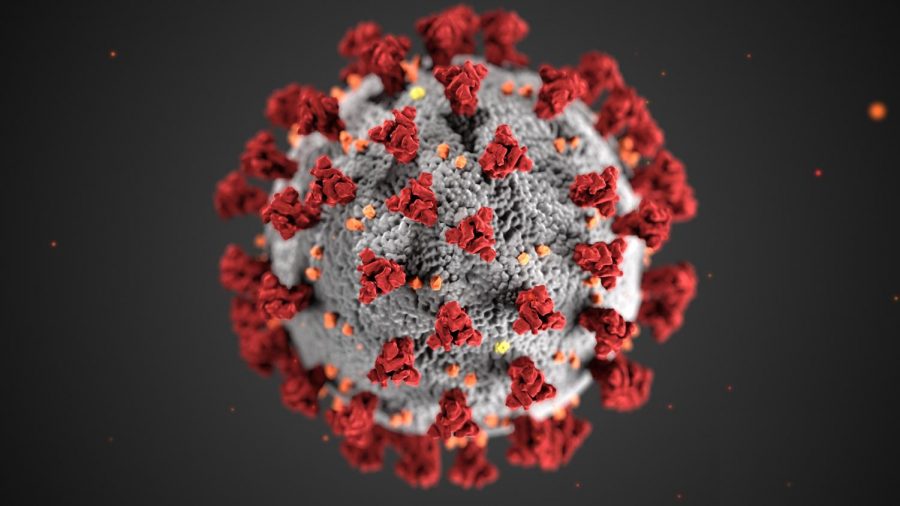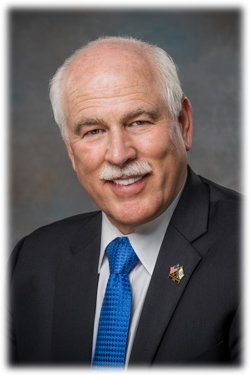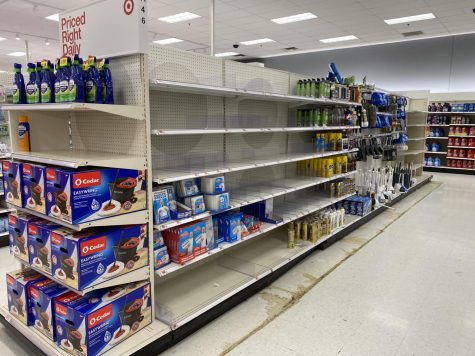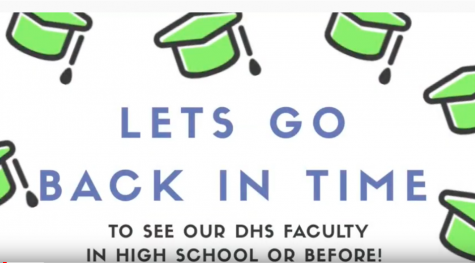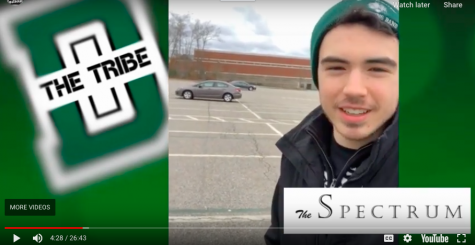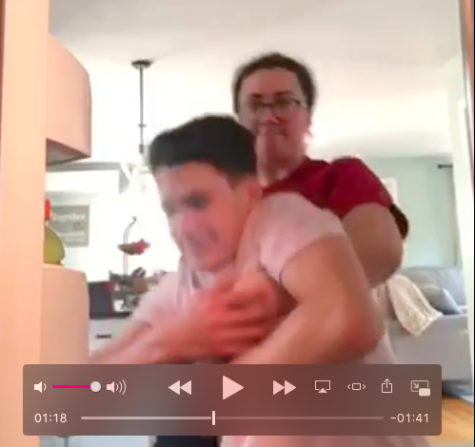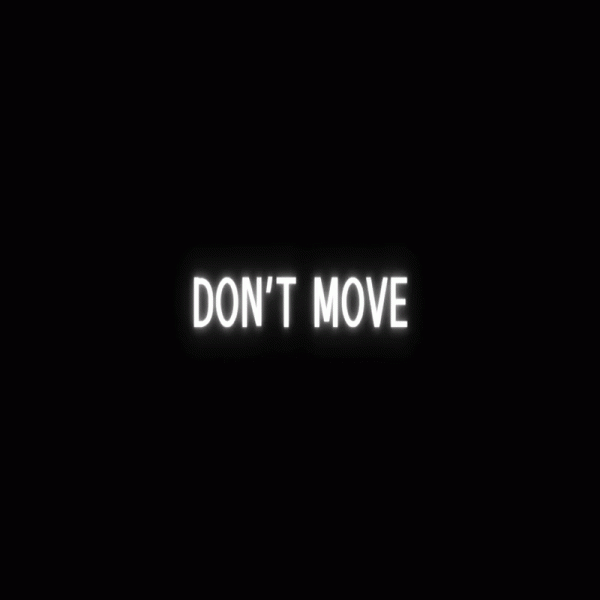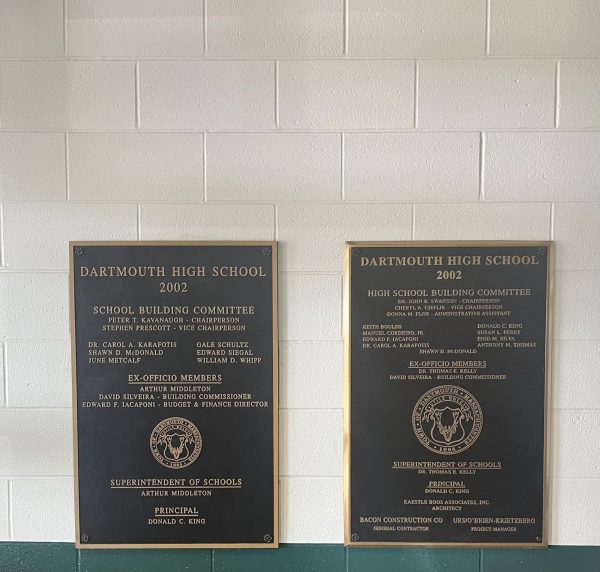The DHS COVID Conundrum
It doesn’t look so scary close up, does it?
January 3, the first day back from a week-long vacation filled with interactions and transactions all taking place in close proximity among large numbers of people. The perfect case scenario for Omicron, proven by the 300+ students currently out. Calls from the nurses and students with backpacks heading to B-floor to be tested kept the first period busy. Classroom attendance started declining one by one, each student being sent home with no in-person guidance for their school work, isolated from their friends and support group, and forced to balance their life from their bedroom.
This dichotomy of the high school population, between in person and at home students, has occurred as a result of limited precautions and the extinction of online school; it is having tremendous influence over the mental health of students and how they are managing schoolwork.
Following the end of Christmas break, many schools across the country have required testing for students, and to have a negative result to come back from break; others have decided to go online completely. In the case of DHS, neither of these options were entertained; instead, the entirety of the student body was expected back in class, leading to a domino effect of close contacts and positive tests.
This lack of precaution is partially due to the fact that online schooling days no longer count, forcing DHS to stay fully in-person. If DHS was to cancel school on account of COVID, students would have to make up the days at the end of the year, similar to a snow day. While teachers were given tests on January 2, they were not available for students. The reasoning behind this is a bit murky, but one cause could be local shortages in rapid tests, as government action to increase accessibility to rapid tests is still in process.
Despite these considered dead ends, there’s one more outlet of precaution that has been overlooked, a gap in tracking transmission. The policy of close contacts at DHS stipulates that students who are unvaccinated and close contact must either test or be dismissed, while vaccinated students who are close contact may remain in class, untested, unless there are reported symptoms.
Even though this may seem reasonable, a study done at UCDavis, using over 1,700 samples including vaccinated, unvaccinated, symptomatic, and asymptomatic individuals suggests that being vaccinated doesn’t affect transmission. That vaccinated people who carry a viral load are able to spread the virus just as much as unvaccinated people. Andy Fell writes, “There was no significant difference in COVID viral load between vaccinated and unvaccinated, or between asymptomatic and symptomatic groups.” It is also suggested within the article that both masking alongside testing for both vaccinated and unvaccinated subjects be continued, despite the influence of multiple factors on transmission also being noted by Richard Michelmore at the Genome Center.
Coupled with these findings, the effect of personal seclusion on students creates a harmful situation, one with limited outs. Following the exemption from online school, DHS hasn’t reinstated any policies regarding how the operation of a class should be transferred over to students online, leading to teachers simply posting assignments to Google Classroom without explanation, the normal additional classroom information from lectures and conversation, and daily agendas.
Students are consequently having to make up for missed in-person information and the benefits of one-on-one teaching. While it would be one thing if every student were dealing with this creating a level playing field, quarantined students are drastically falling behind in comparison to students in school, sometimes missing out on an entire unit in some honors and AP classes.
Students also have to deal with making up missed quizzes and tests when they come back, cramming in multiples within the short span of a few days to remain up to date with other new assignments. While some teachers have tried their best to make learning conditions better for quarantined students, the absence of a system and guidelines outlining definite ways of keeping these students acquainted with in-school progress is creating a further stressed out community.
Whose responsibility is it to ensure that the COVID guidelines are being upheld in class? It seems like a lot of the fallback is being placed on the teachers. So to what extent is it the responsibility of teachers to police students’ COVID safety activities? It seems like the answer to this question varies from classroom to classroom. In certain classrooms a teacher can be heard saying “please pull your mask up” as soon as a mask accidentally slips below the nose as opposed to others in which students are sitting in close proximity unmasked.
At the moment the country is getting more cases per day than at any other point in the pandemic so far, and as you walk through the classrooms, you can see the vacant seats of students who are out for “medical reasons.” There are also quite a few teachers who have been out for a considerable amount of time which has left me to wonder why there hasn’t been some kind of statement released explaining expectations.
With a large number of teachers out of the building this brings up another prominent issue: staffing. There are not nearly enough substitutes to cover all of the absences, which have left teacher’s aids and special education teachers covering classes when their own students are left without special help. COVID cases are still surging exponentially and according to The New York Times cases were up 215% on January 9.
Teacher’s jobs have just become harder and harder because as stated earlier, with students out so much they have to keep track of an egregious amount of late work. Tests and quizzes that can’t be done over Google Classroom and have to be postponed until the students’ return, and at that point, the content may be outdated to them so sometimes even a retake is necessary. This can lead to being behind by weeks and in some cases even months leaving the teachers and the students at a major disadvantage. Both with time and knowledge of subjects.
What’s a possible solution? Remote.
If we were to go remote for a short period of time, allowing for the cases in the area to die down and for students to catch up on some late work, this would solve a lot of the above problems. It may not be ideal but the situation that the entire country and the Dartmouth community is in right now is certainly not ideal. Adjustments need to be made and some of those adjustments people aren’t going to like or necessarily agree with; however, they are necessary. The path we are on right now is just not the correct one and there needs to be a change.
The new year brought in a new wave of the pandemic. Specifically within our school, it can feel inevitable to become infected. Spread of the virus can be seen within sports specifically, with many instances where full teams go down with COVID. Last year, sports were aggressively modified, or even canceled, in order to mitigate the spread of COVID. Once numbers began to decrease, however, sports became more normal. In the spring season last year, students were allowed to take off their masks outside and cases were dropping.
In the 2021-2022 school year, sports started out fairly normal. However, we were able to see the effects of practicing inside directly when the vast majority of the volleyball team contracted COVID in October. That was when the school should have looked into changing the plan for indoor sports. However, when the winter season came around, sports like track, ice hockey, and basketball were planning to go on as normal.
After the return from winter break, students and teachers alike began testing positive at a much higher rate than our school has seen before. Classrooms are half-full, the parking lot has a much larger number of free spots, and the nurse’s office is always full of students testing. Since public schools in Massachusetts aren’t allowed to go remote at the moment, the school’s best mitigation tactic appears to be pressing the pause button on sports.
Students were told that sports were canceled until Monday, January 10, at which point the athletic director and administration would reconsider. Sports should continue to be canceled for the entirety of the week of January 10. It makes sense to allow for two weeks for the surge of Covid to decrease and students to return to school. In the next week or so, scientists and epidemiologists should also know more about the Omicron variant, and hopefully that new information will allow our administration to make an informed decision that will keep students safe and happy.

